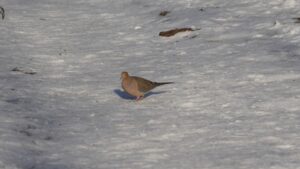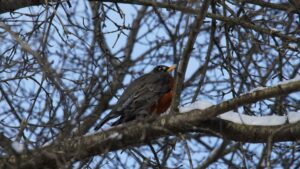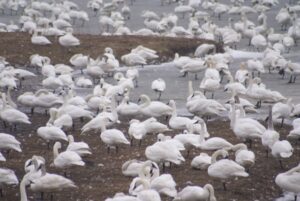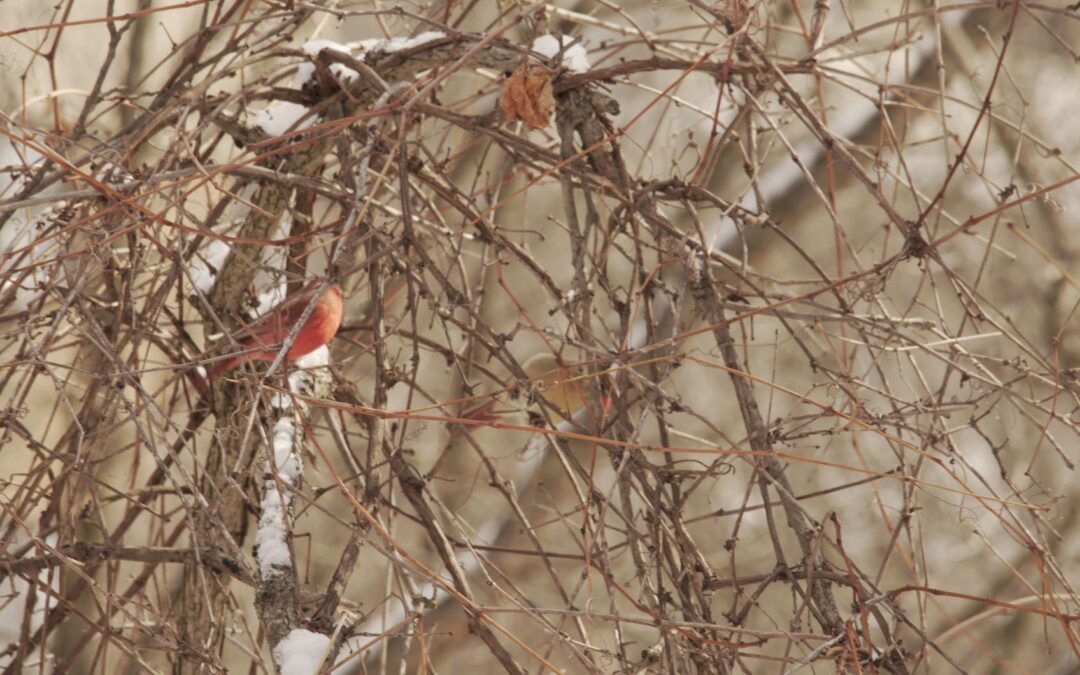Hi everyone! Welcome back. I hope you are enjoying the slightly longer days and the subtle hints of spring’s awakening. The late winter sunshine has been encouraging the birds to sing as I have been noticing many news songs in the air. There have been a lot of cardinals in my area and I have really enjoyed watching them sing and play in the trees as they get ready for spring to arrive. The family of Mourning Doves that have nested in my backyard for the past two years have returned and I can see that there are several others with them. I have noticed about ten or so over the past week.

The return of spring is an exciting time in the bird world. Warmer temperatures mean that migratory birds can begin their journey back to their summer nesting places, songbirds are practicing their songs, and dull winter plumage is replaced by bright feathers in order to attract a mate. One of the first encouraging signs of spring that I always look out for is the Robin. Although the American Robin is not a species that migrates to the south, their behaviour changes over the winter as they choose different places to look for food. They expend less energy and carry a dull plumage over the winter. This means that we are able to see them all year round, but also that their increased visibility hints to the warmer weather’s approach. American Robins are one of the first non-migrating birds to lay their eggs in spring, which means that they are out looking for nesting places and food sources earlier and more
noticeably than other birds. In the spring they are more often seen on lawns, picking worms out of the soil which makes them a welcome sight.

The American Robin is such a classic sign of spring that the first sighting has become a time of celebration and sharing in my family. Each spring when one of us first sees a Robin hopping on a lawn, we send a message to family to share the happiness of the coming season. It has
become a little bit competitive over the years to see who can send the first photo of a Robin. That time is almost here! I haven’t seen one yet, but I have been keeping an eye out and an ear open so that I can share my sighting. I think it would be really fun if we to share our first Robin
sightings with other readers of the blog! Keep an eye out and send a photo to us and we will share everyone’s excitement together. I can’t wait to see all of your pictures!

This week I wanted to share another special phenomenon that is happening in my area. Each year the Tundra Swan makes its migratory journey from the north to south in fall and back up to Hudson Bay in the springtime before making their summer nests. On their way north they
congregate in the thousands around Pinery Provincial Park and Almer. In fact, the Pinery provides a resting spot for almost 60,000 Tundra Swans in March. If you would like to witness the extraordinary event you can visit the Pinery and see the swans for the brief period that they are there in March. Then they will be on their way again to lay eggs and raise chicks before migrating south again in the fall. Tundra Swans are a large bird species with a very large wingspan, about 130 cm. Their feathers are all white and their beaks are black with a spot of yellow where the beak meets the head. Their legs and feet are all black too. Their name indicates their preferred habitat, which is the Arctic Tundra, this is also apparent in their feathers. Tundra Swans have a significant number of feathers compared other bird species. They have around 25,000 feathers which keep them warm and insulated in their preferred climate. They usually feed on plant matter in the water, but also eat clams and other arthropods when available. I think that it would be so neat to see the Tundra Swans gathered together on their way up north. If you make the journey to see them, please share your experience with us. I also hope that you keep an eye out for the first spring Robin.
Until next time, happy birding!


Recent Comments